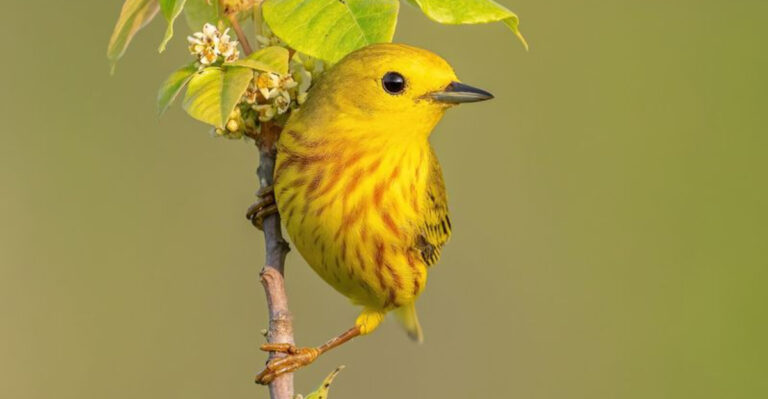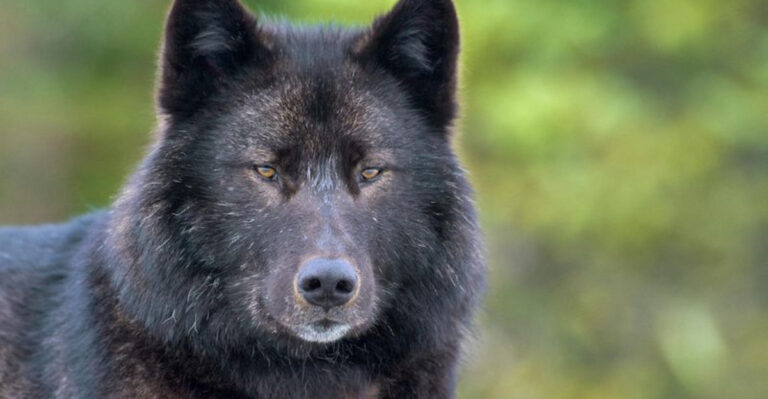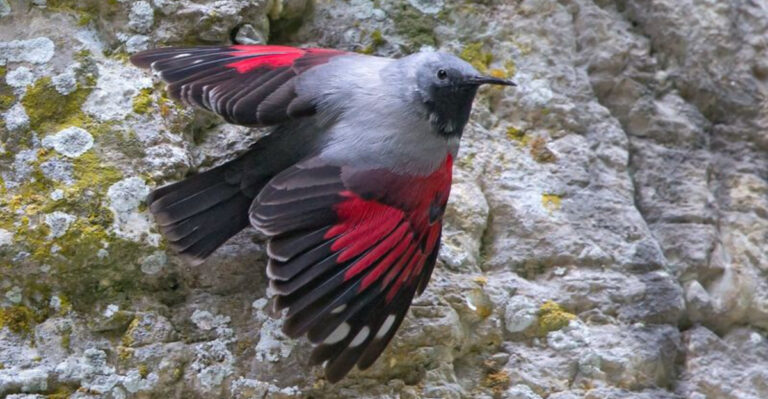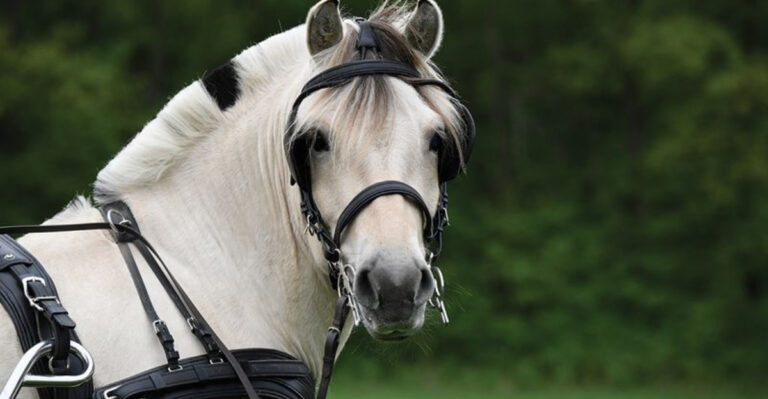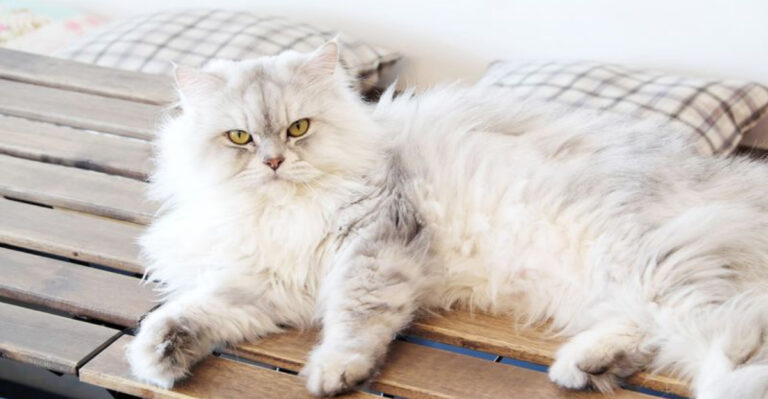Uncover 10 Different Falcon Species And Their Characteristics
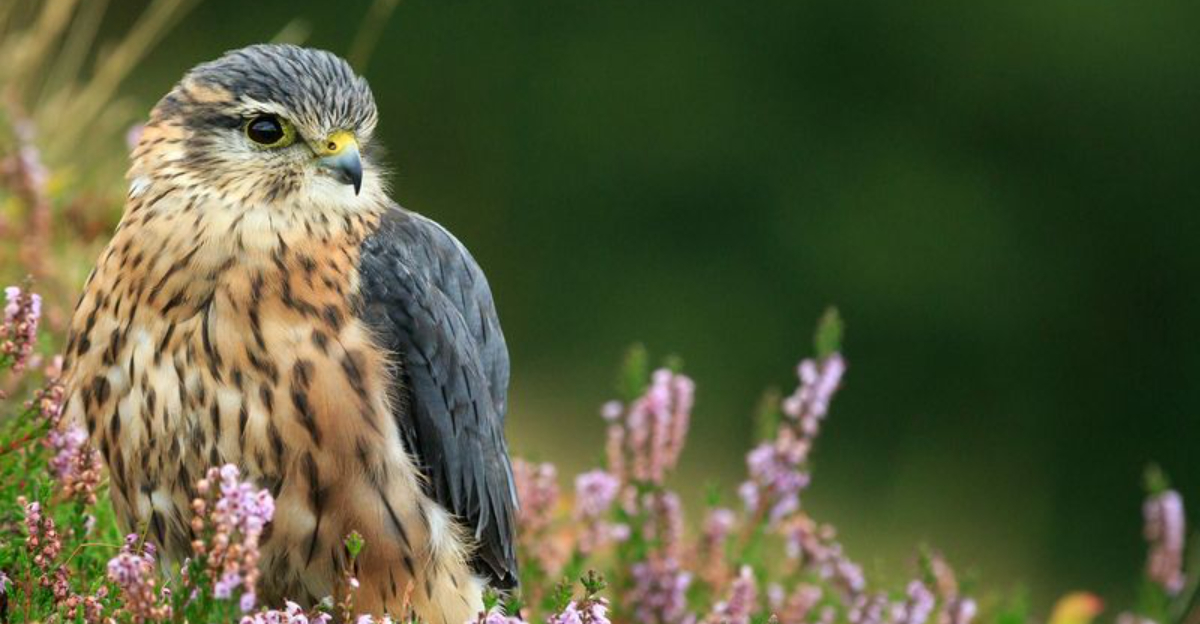
Falcons are incredible birds of prey known for their exceptional speed, keen eyesight, and impressive hunting skills.
These magnificent raptors can be found across every continent except Antarctica, adapting to diverse habitats from deserts to Arctic tundra.
With over 40 species worldwide, each falcon possesses unique characteristics that help it thrive in its specific environment.
1. Peregrine Falcon: The Speed Champion
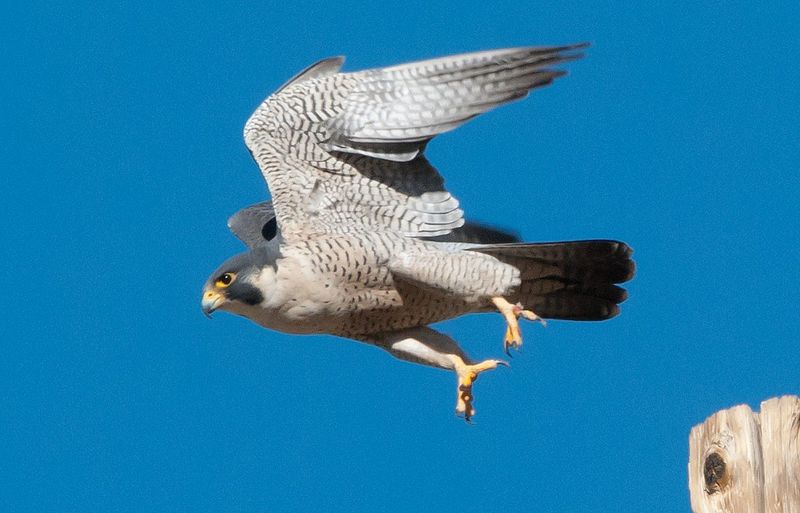
Holding the title of fastest animal on Earth, the Peregrine Falcon can reach speeds of 240 mph during its hunting dive, called a stoop. This medium-sized raptor sports a distinctive black “mustache” marking against its white face.
Peregrine Falcons have slate-gray backs, barred white underparts, and powerful yellow feet equipped with sharp talons. Their population recovered remarkably after DDT pesticides nearly wiped them out in the mid-20th century.
Highly adaptable, these falcons now nest on city skyscrapers, using these artificial cliffs to hunt pigeons and other urban birds. Their incredible eyesight allows them to spot prey from nearly two miles away!
2. Gyrfalcon: Arctic Hunter
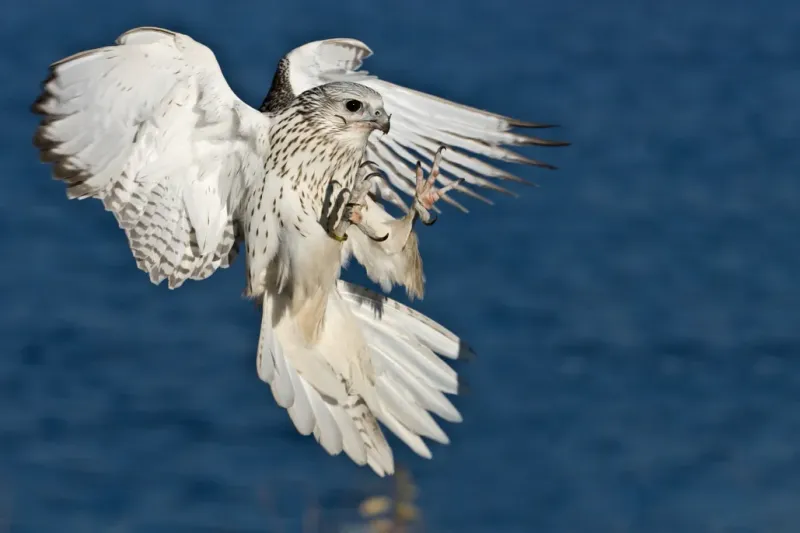
Majestic and powerful, the Gyrfalcon reigns as the largest falcon species in the world. Native to Arctic regions, these impressive birds display color variations ranging from nearly pure white to dark gray-brown, depending on their geographic location.
Gyrfalcons possess remarkably broad wings and long tails that help them maneuver through harsh Arctic winds. Unlike many raptors, they don’t migrate far during winter, instead adapting to the brutal cold of their northern homes.
Historically prized by medieval royalty for falconry, these birds were considered the most prestigious hunting companions. Their diet consists primarily of ptarmigan, Arctic hares, and seabirds, which they pursue with relentless determination across the tundra.
3. Merlin: The Woodland Acrobat
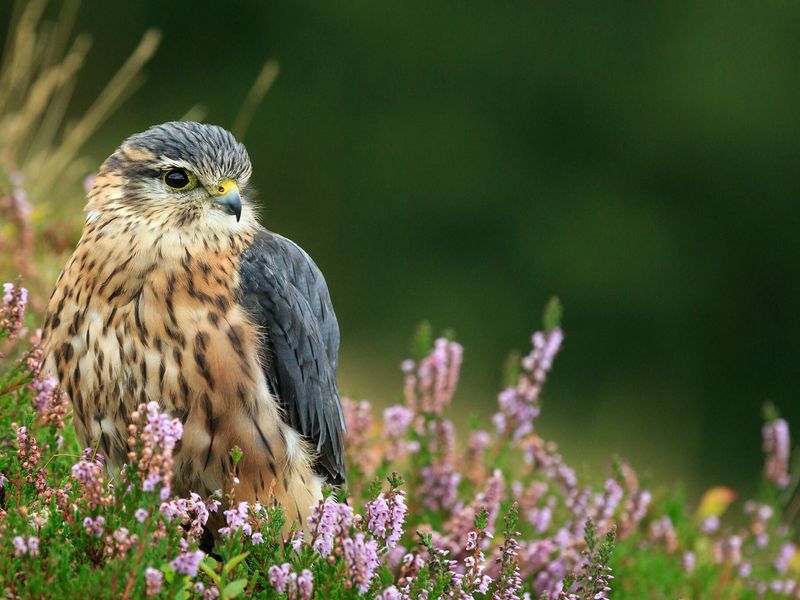
Small but fierce, the Merlin falcon packs remarkable strength and agility into its compact frame. About the size of a Blue Jay, these woodland hunters zoom through forests and open areas with incredible maneuverability, performing quick turns that larger falcons can’t match.
Males display slate-blue upper parts while females and juveniles show brown coloration. Both sexes feature streaked underparts and distinctive facial patterns with narrow “mustache” markings. Merlins rarely build their own nests, preferring to take over abandoned crow or magpie nests.
Their hunting style involves surprising prey from cover or pursuing birds in direct, horizontal chases rather than the diving stoops of their peregrine cousins. Listen for their sharp, rapid “kee-kee-kee” calls in northern forests!
4. Saker Falcon: Central Asian Nomad
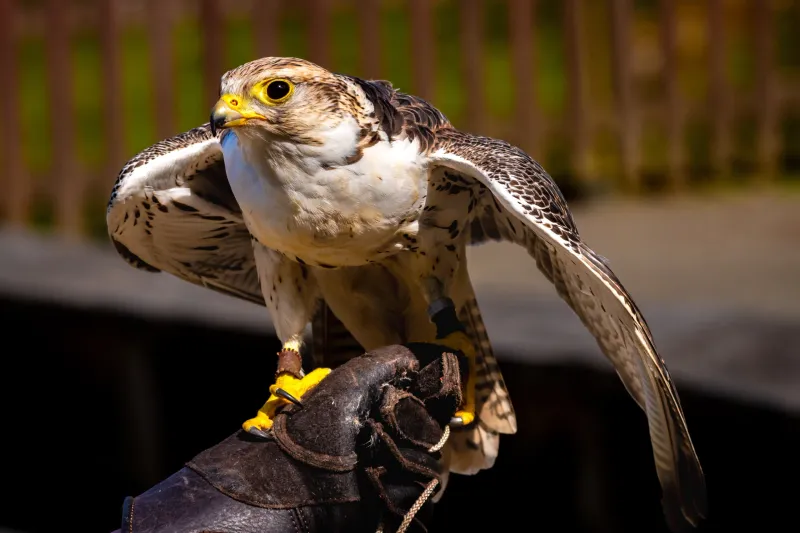
Revered throughout Central Asia for thousands of years, the Saker Falcon holds special cultural significance in falconry traditions. These large, powerful birds feature sandy-brown upperparts, pale underparts with dark streaking, and a light-colored head with minimal facial markings.
Sakers thrive in wide-open landscapes from Eastern Europe through Central Asia, hunting primarily ground-dwelling mammals like ground squirrels and jerboas. Their broad wings and relatively short tails make them perfectly adapted for soaring over vast steppes and deserts.
Unfortunately, these magnificent birds face serious conservation challenges due to habitat loss, electrocution on power lines, and illegal capture for the falconry trade. Their ability to withstand extreme temperature fluctuations makes them remarkably resilient in harsh environments.
5. Aplomado Falcon: Tropical Elegance
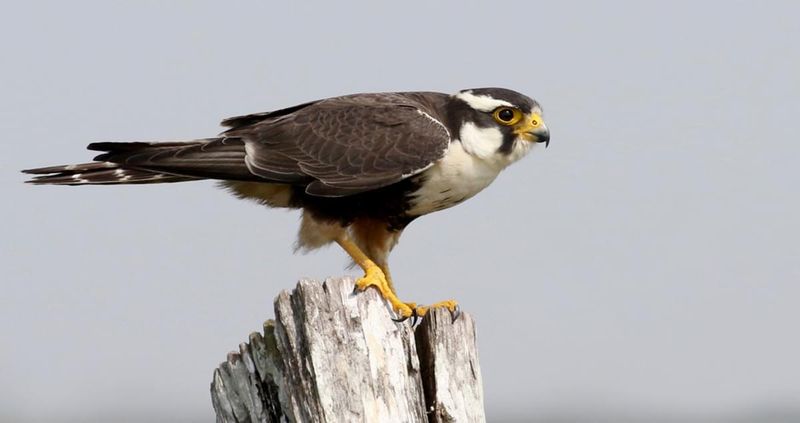
With striking black, gray, and rufous plumage, the Aplomado Falcon stands out as one of the most colorful and elegant falcon species. A long black-and-white facial pattern creates a distinctive banded appearance, while rusty-orange underparts add a vibrant touch to this medium-sized raptor.
Native to open grasslands and savannas from the southwestern United States through South America, these graceful hunters often work in pairs. One falcon flushes prey while its partner makes the capture – a rare cooperative hunting strategy among raptors.
Nearly vanishing from the U.S. by the 1950s due to habitat loss, Aplomados have been reintroduced in Texas and New Mexico.
They frequently use abandoned stick nests built by other birds rather than creating their own, and can sometimes be spotted perched on fence posts scanning for small birds and insects.
6. Prairie Falcon: Desert Specialist
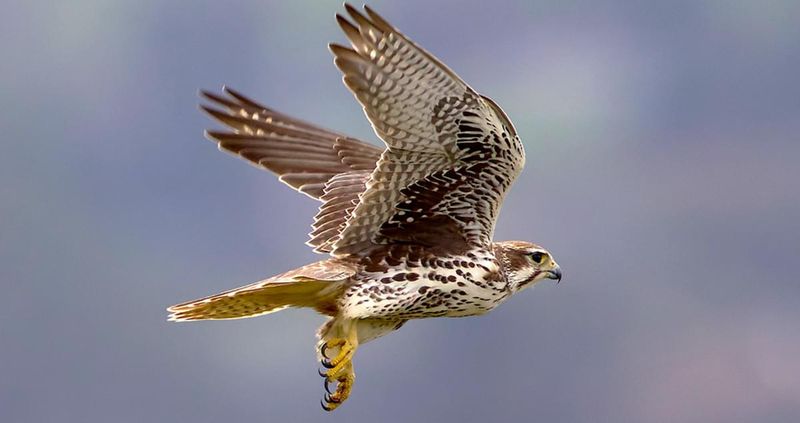
Masters of North America’s arid landscapes, Prairie Falcons blend perfectly with their desert and grassland surroundings. Their sandy-brown upperparts provide excellent camouflage against canyon walls and cliff faces where they typically nest.
Look for distinctive dark “armpit” patches visible during flight – a key field mark separating them from similar species. These medium-sized falcons employ diverse hunting techniques, from high soaring to low, surprise attacks just above the ground. Prairie Falcons remain year-round residents in much of their range when other raptors migrate south.
They primarily target ground squirrels and other small mammals, but will opportunistically hunt birds when available. Unlike some falcon species, Prairies rarely adapt to urban environments, preferring remote, open spaces away from human development.
7. Lanner Falcon: Mediterranean Marvel
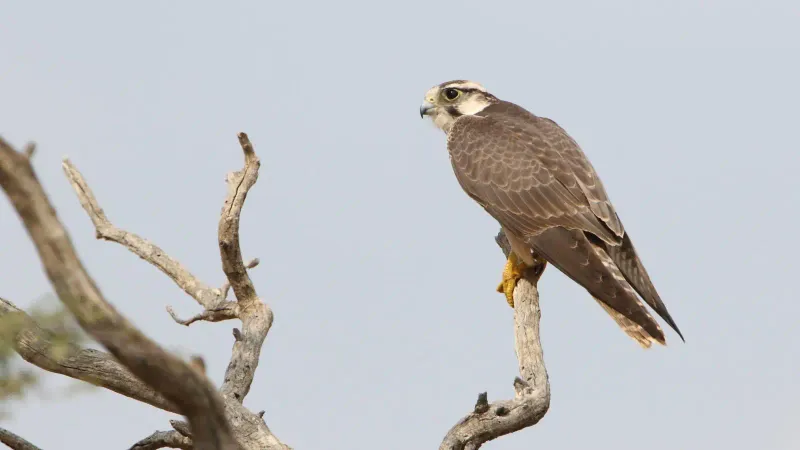
Gracing the skies above North Africa, the Middle East, and southern Europe, the Lanner Falcon combines speed with remarkable adaptability. Its rusty crown contrasts beautifully with a pale face and distinctive thin mustache marking, while its back displays slate-gray to brown coloration.
Lanners possess broader wings than Peregrines, allowing them to excel at both soaring and powered flight. These versatile hunters can capture prey in the air or on the ground, taking everything from small birds to lizards and insects.
Ancient Egyptians revered the Lanner as a symbol of the god Horus, featuring it prominently in hieroglyphics and art. Today, these falcons face threats from pesticides and habitat loss, though they’ve proven more adaptable to human-altered landscapes than many other raptors.
8. American Kestrel: Colorful Miniature
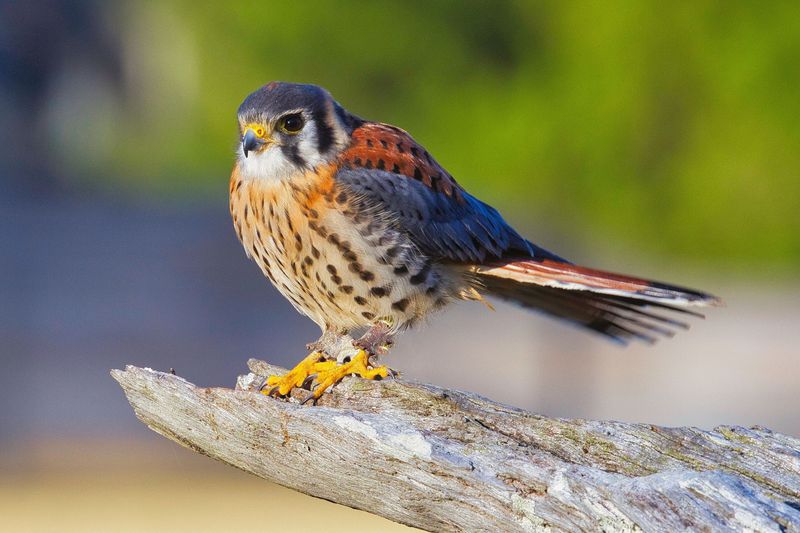
America’s smallest and most widespread falcon sports a dazzling combination of rusty-red, blue-gray, and black plumage. Males show striking blue-gray wings and rufous backs with black spots, while females display rufous coloration with barring throughout. Both sexes feature distinctive black facial markings resembling twin mustaches and “sideburns.”
These tiny predators, roughly robin-sized, hover effortlessly above open fields – a behavior earning them the nickname “windhover” in some regions. Kestrels hunt primarily by sight, using their ability to see ultraviolet light to track vole urine trails invisible to humans!
Despite their small size, these feisty falcons readily defend their territory against much larger birds. Look for them perched on roadside wires and fence posts throughout North America, bobbing their tails characteristically.
9. Bat Falcon: Twilight Specialist
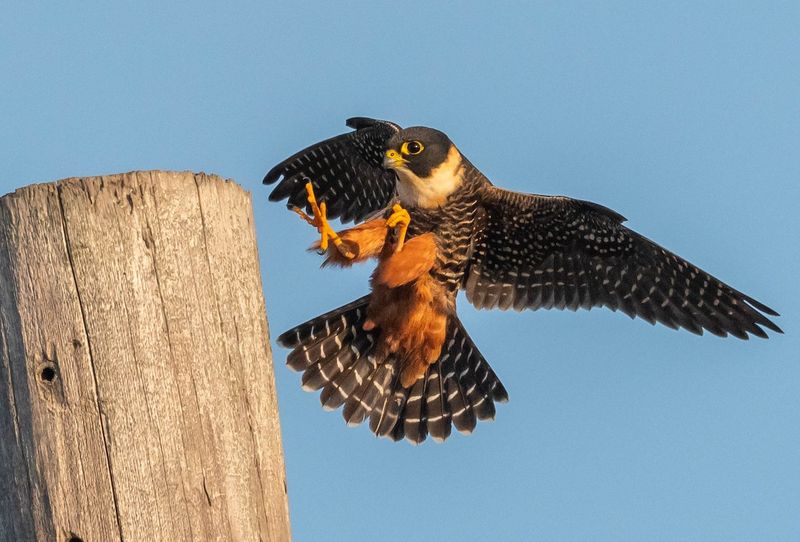
As evening shadows lengthen across tropical forests from Mexico to Argentina, the Bat Falcon emerges to hunt. These compact, powerful birds specialize in capturing flying prey during dawn and dusk – including their namesake bats, plus swallows, swifts, and large insects.
Sporting glossy black upperparts contrasting with white throats and orange-rufous lower bellies, Bat Falcons have a distinctive appearance. Their large eyes help them hunt in low light conditions when other diurnal raptors have already roosted for the night. They typically nest on cliff ledges or in tree cavities near rivers or forest edges, where flying prey concentrates.
Unlike many falcons that prefer open country, Bat Falcons thrive along forest edges and clearings in dense jungle regions, where their exceptional aerial agility allows them to maneuver through gaps in the canopy.
10. Eurasian Hobby: Swift Hunter
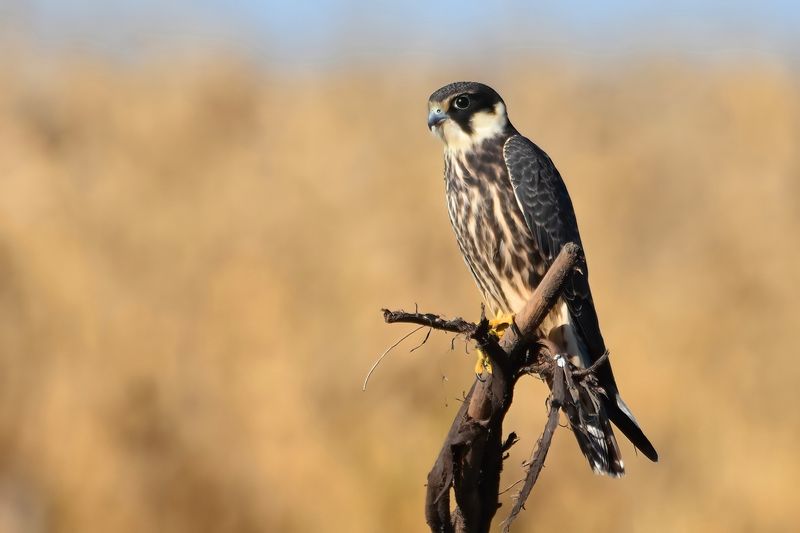
Built for speed and agility, the Eurasian Hobby resembles a smaller, more slender version of the Peregrine Falcon. Its slate-gray back, heavily streaked underparts, and distinctive “mustache” markings create a dashing appearance, complemented by rusty-red “trousers” on its lower body.
Summer visitors across Europe and Asia, these medium-sized falcons specialize in capturing dragonflies and small birds – even swallows and swifts, which few other predators can catch. Hobbies execute these aerial feats with graceful wing beats and remarkable maneuverability.
They’re often spotted hunting near wetlands where dragonflies concentrate, sometimes catching and eating insects on the wing without landing.
During migration, these athletic birds travel impressive distances between European breeding grounds and African wintering areas, crossing the Sahara Desert twice annually.

